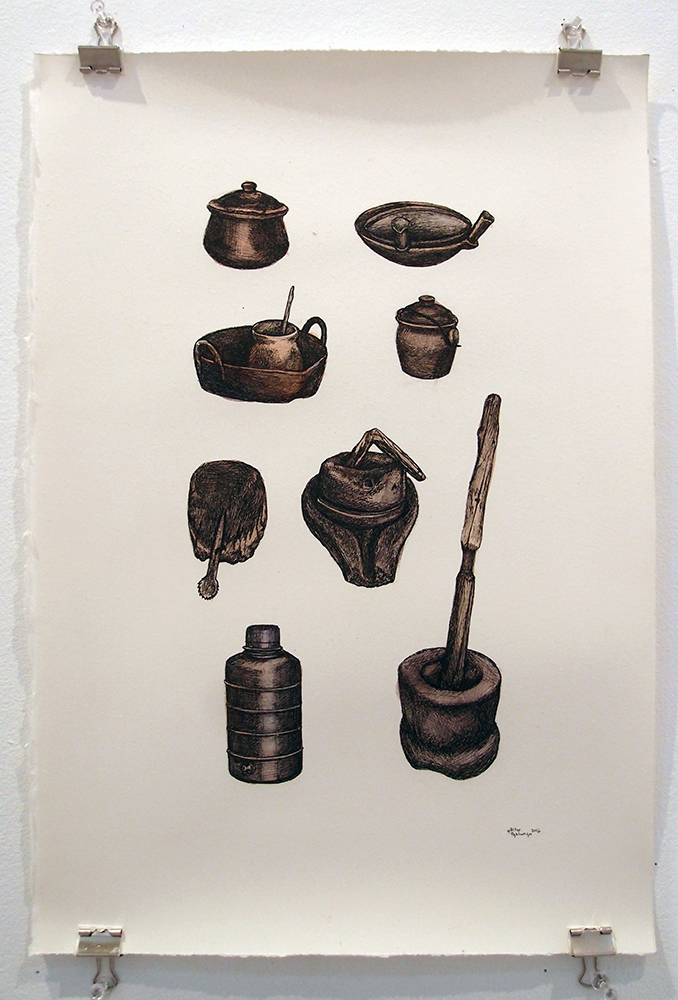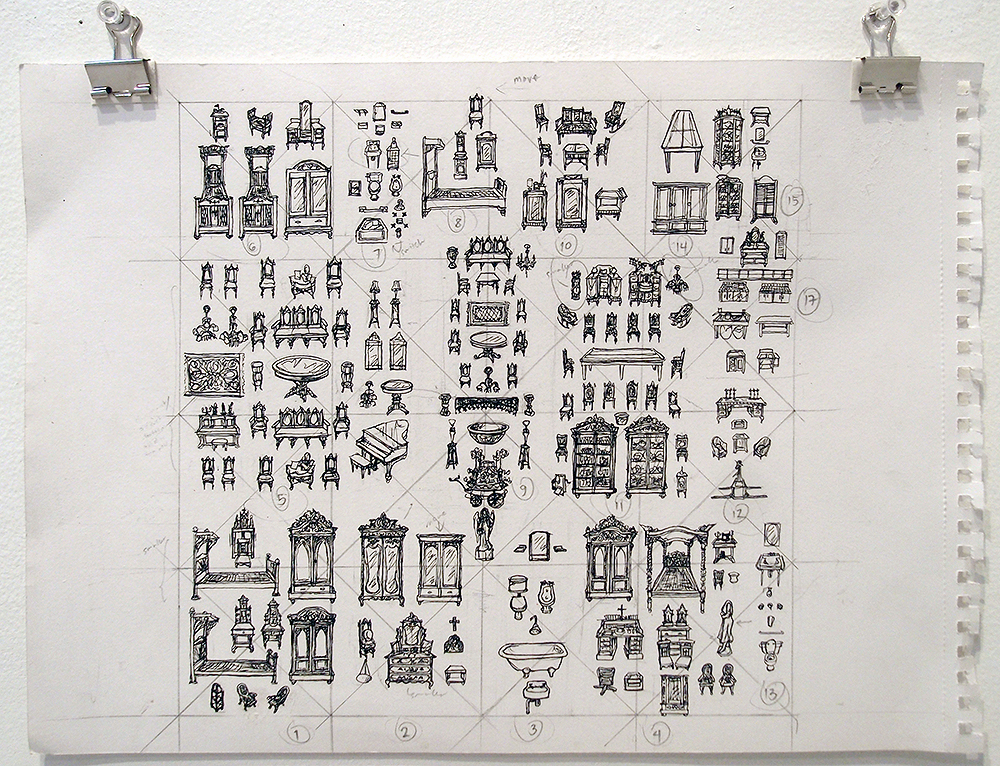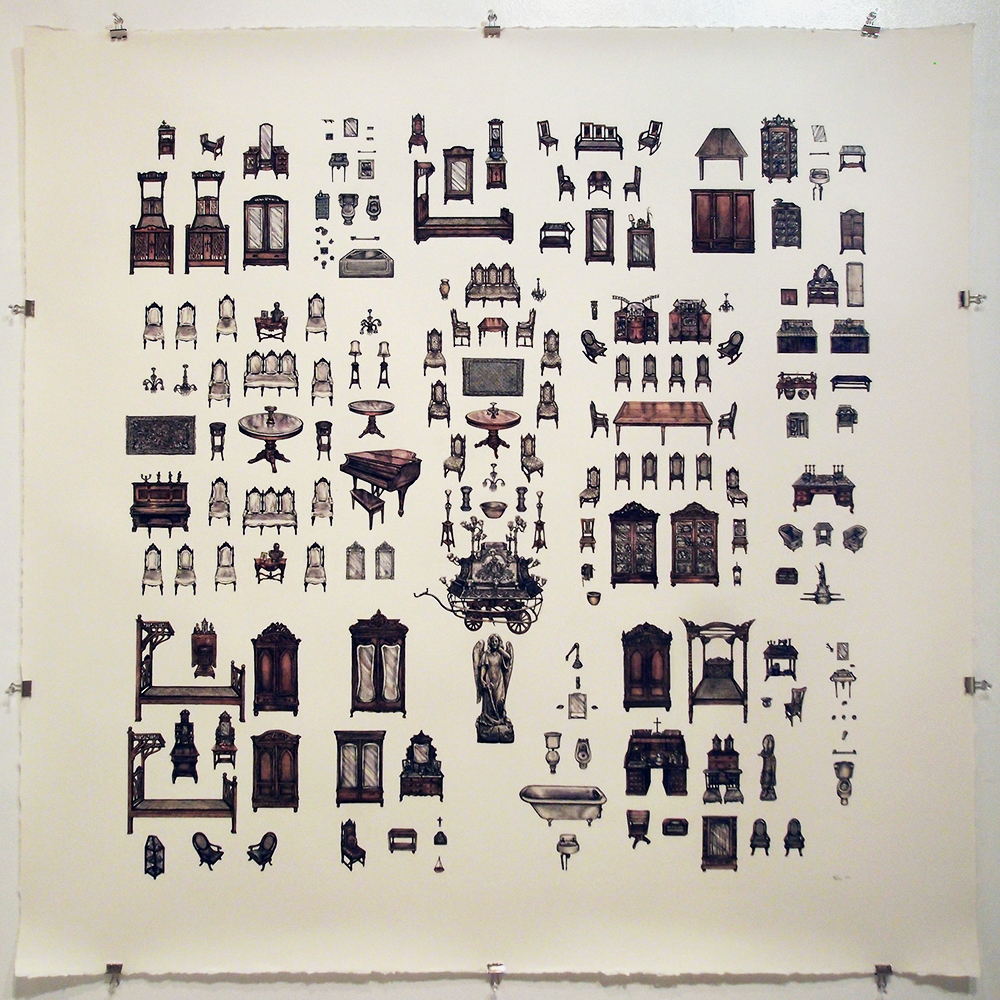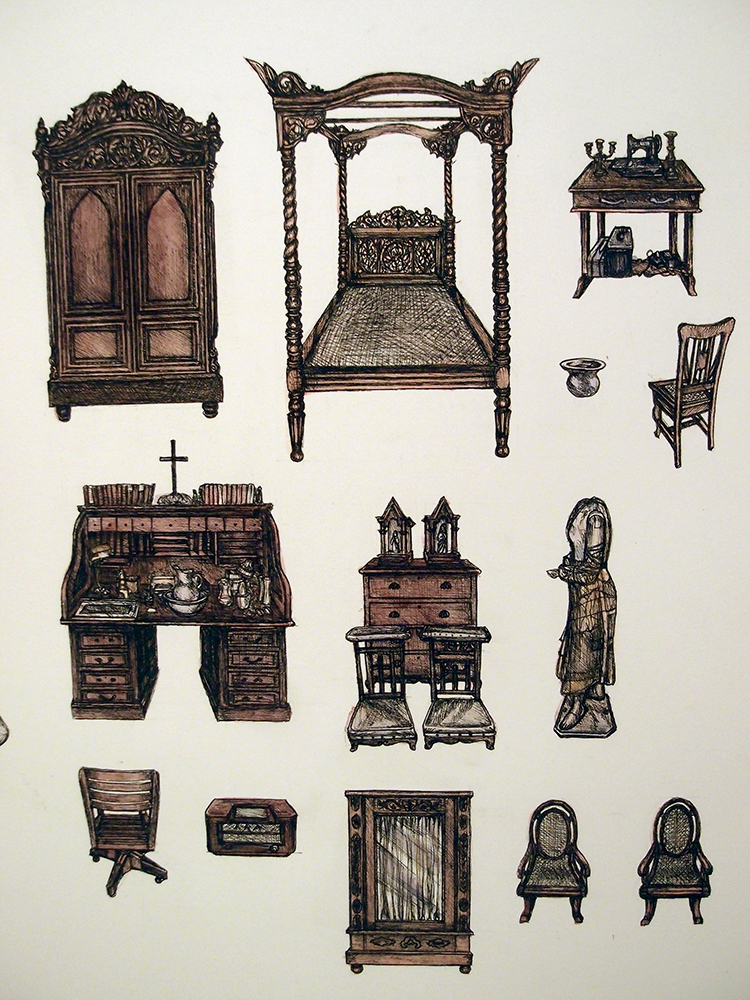Henrielle Baltazar Pagkaliwangan
In partneship with Tin-Aw Gallery
October — November 2016

Henrielle Baltazar Pagkaliwangan (b.1994) explores stories behind the mundane and indispensable objects to examine Philippine history and material culture. Drawing from taxonomical illustration, she documents personal and historical narratives as a reflection on knowledge through prints and drawings.
Pagkaliwangan graduated magna cum laude from the University of the Philippines College of Fine Arts (Major in Studio Arts – Painting) in 2015, where she also received one of the Department of Studio Arts Outstanding Thesis Awards for her undergraduate thesis titled Taxonomy Of Things. She won the grand prize of Don Papa Rum Art Competition 2017, which included a 1-month residency in Florence, Italy. Her work has been exhibited in solo and group exhibitions in the Philippines, Indonesia, and Taiwan.
“My stay in Negros Occidental gave me the opportunity to learn about well-preserved ancestral houses and made me realize the potential of doing fieldwork research in investigating material culture that holds shared histories that go beyond my personal narratives.”
- HBP

Tiempo Galing
26.12.2016
Kapitana Gallery
Sa Negros, ang kwarta, ginapiko, ginapala (Here in Negros, there is so much money it’s being pickaxed and shoveled).
Upon my arrival in Negros in November, trucks carrying tons of harvested sugar cane greeted me. It was the harvest season, or tiempo galing to the locals. To them it was an ordinary, average scene, but not to a nonlocal like myself. Negros, which has always been famous for its long history of the sugar industry, is very distinct from any other island in the Philippines. In this series of works, I attempt to frame the distinctive way of life in Negros, particularly the culture and history shaped by the sugar industry.
Through drawing I documented this very mundanity, selecting objects from the local scene which are taken for granted, but full of underlying narratives. Mundane things are extensions of ourselves as human beings.
On its own, an object holds no meaning; rather it is the creation, consumption, interpretation of, and interaction with objects that shape material culture which reflects our shared and / or personal knowledge, experiences, and lifestyle. Such is the case in Tana Dicang’s house which represents the lavish lifestyle of sugar barons in Negros.
On its own, an object holds no meaning; rather it is the creation, consumption, interpretation of, and interaction with objects that shape material culture which reflects our shared and / or personal knowledge, experiences, and lifestyle. Such is the case in Tana Dicang’s house which represents the lavish lifestyle of sugar barons in Negros.
Much is learned from its authentic furniture: the Filipino-Spanish ancestral architecture and design, history, and cultural heritage. I made a visual inventory of the ornate objects of the house, laid beside rough drawings of objects from the maids’ quarters and the farmlands, to suggest the social disparity that exists until now. The juxtaposition of these contrasting yet coexisting elements, depicted in a style reminiscent of natural history and taxonomy illustrations, shows the underlying narrative in this collection of objects: the life in Negros molded by the sugar trade.
![]()
Much is learned from its authentic furniture: the Filipino-Spanish ancestral architecture and design, history, and cultural heritage. I made a visual inventory of the ornate objects of the house, laid beside rough drawings of objects from the maids’ quarters and the farmlands, to suggest the social disparity that exists until now. The juxtaposition of these contrasting yet coexisting elements, depicted in a style reminiscent of natural history and taxonomy illustrations, shows the underlying narrative in this collection of objects: the life in Negros molded by the sugar trade.
- HBP








L-R
01 Tiempo Galing; 18 x 72 in; watercolor on paper (scroll); 2016 02 - 03 Tubo kag Trucking 2; diptych; 16 x 11 in; pen ang ink and watercolor on paper 02 - 03 Gamit sang Kusina; diptych; 16 x 11 in; pen ang ink and watercolor on paper; 2016 04 - 05 Tubo kag Trucking 2; diptych; 16 x 11 in; pen ang ink and watercolor on paper




L-R
01 final boceto for “Portrait sang Balay ni Tana Dicang“, 9 x 12 in, graphite, pen, and ink on paper, 2016 02 Portrait sang Balay ni Tana Dicang; 45 x 45 in, pen and ink, and watercolor on paper; 2016 03 - 04 Portrait sang Balay ni Tana Dicang artwork detail 05 - 06 exhibition view
Photos courtesy of the artist and Tin-Aw Art Management Inc.